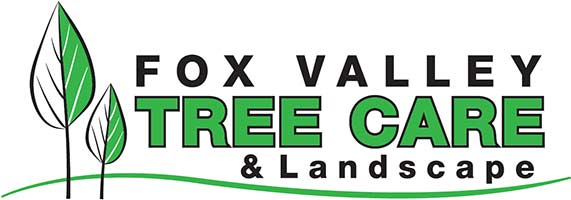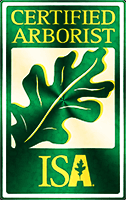Protecting Wisconsin’s vibrant tree population is crucial for maintaining the state’s lush greenery and ecological balance. It is important to pay attention to various pests and diseases that can weaken or even kill trees if left unchecked.
Tree pests and diseases pose significant challenges to the health and vitality of Wisconsin’s trees. From invasive insects to fungal infections, these threats can spread rapidly, causing extensive damage to both urban and rural tree populations. Understanding and identifying these common adversaries is essential for effective tree care and preservation efforts across the state.
Types of Tree Pests
Understanding threats to Wisconsin trees is crucial for effective tree management and preservation efforts. Let’s review the most common tree pests in Wisconsin:
- Emerald Ash Borer (EAB): The Emerald Ash Borer, an invasive beetle native to Asia, has become a significant threat to ash trees across Wisconsin. These metallic green beetles lay their eggs on the bark of ash trees, and their larvae tunnel beneath the surface, disrupting the tree’s nutrient flow. EAB infestations can quickly lead to the decline and eventual death of affected ash trees.
- Oak Wilt: Oak Wilt is a devastating disease caused by the fungus Ceratocystis fagacearum, which affects oak trees. This disease spreads through interconnected root systems or by sap-feeding beetles, leading to the wilting and eventual death of infected trees. Oak Wilt poses a serious threat to oak populations in Wisconsin, especially in the southern part of the state.
- Gypsy Moth: The gypsy moth, an invasive species from Europe, poses a significant threat to various tree species in Wisconsin. Gypsy moth caterpillars voraciously feed on the foliage of trees, defoliating large areas of forest. This can weaken trees, making them more susceptible to other pests and diseases, and even causing widespread tree mortality in severe infestations.
- Dutch Elm Disease (DED): Dutch Elm Disease, caused by the fungus Ophiostoma novo-ulmi, has had a profound impact on elm trees in Wisconsin since its introduction in the 20th century. Spread primarily by elm bark beetles, this disease blocks the vascular system of elm trees, leading to wilting, yellowing, and eventual death of infected trees. DED has decimated elm populations across the state, drastically altering Wisconsin’s urban and rural landscapes.
- Pine Bark Beetles: Various species of pine bark beetles, such as the pine engraver beetle and the southern pine beetle, target pine trees in Wisconsin. These beetles bore into the bark of pine trees, creating galleries where they lay eggs and feed on the tree’s inner tissues. Infestations can weaken pine trees, making them more susceptible to drought, disease, and other stressors, ultimately leading to tree mortality.
Understanding the characteristics and impacts of these tree pests is essential for implementing effective management strategies to protect Wisconsin’s valuable tree resources. Vigilance, early detection, and appropriate intervention measures are key to mitigating the threats posed by these pests and preserving the health and vitality of Wisconsin’s diverse tree species.
Other Common Tree Pests and Diseases
In addition to the major threats posed by pests like the Emerald Ash Borer and diseases like Dutch Elm Disease, Wisconsin’s trees are also susceptible to a range of other less common pests and diseases. Let’s explore a few more:
- Cottonwood Borer: The Cottonwood Borer is a type of longhorn beetle that targets various species of hardwood trees, including cottonwoods and poplars. These beetles lay their eggs on the bark of host trees, and their larvae tunnel into the wood, causing damage to the tree’s vascular system. Infestations can weaken the tree and make it more susceptible to other pests and diseases.
- Apple Scab: Apple Scab is a fungal disease that affects apple trees, as well as other members of the rose family, including crabapples. This disease typically appears as dark, scabby lesions on leaves, fruit, and stems, leading to defoliation and reduced fruit quality. Apple Scab can significantly impact apple orchards and home fruit trees if left untreated.
- Leaf Spot Disease: Leaf Spot Disease encompasses a group of fungal diseases that cause circular or irregular spots on tree leaves. These spots may vary in color and size depending on the specific pathogen involved. Leaf Spot Diseases can weaken trees by reducing their ability to photosynthesize effectively, leading to premature leaf drop and overall stress on the tree.
While these pests and diseases may not garner as much attention as some of the more high-profile threats, they can still have significant impacts on the health and aesthetics of Wisconsin’s trees.
Importance of Monitoring and Early Intervention
By staying vigilant and proactive, we can identify potential pest infestations, diseases, and other issues before they escalate into more significant problems. Regular inspections allow us to detect signs of stress, disease, or pests early. By intervening at the first sign of trouble, we can maintain the overall health and vitality of trees. Early intervention also helps us prevent the spread of these pests and diseases and ultimately contains the problem to prevent widespread infestation and minimize the damage.
Partnering with a professional arborist is essential for effective monitoring and intervention efforts. Arborists have the expertise, experience, and tools necessary to accurately assess tree health, identify potential issues, and recommend appropriate courses of action. Their knowledge of local pests, diseases, and environmental conditions ensures that interventions are tailored to the specific needs of each tree species and situation. Fox Valley Tree care is your local tree care expert ready to help you manage tree pests. Contact us today to have a member of our team stop out and help identify tree pests and create a treatment plan.
Protecting Native Wisconsin Trees
By remaining vigilant against tree pests and diseases and taking proactive measures to address potential threats, we can ensure the long-term survival of these invaluable resources. For expert guidance and assistance in tree pest management and disease care, look no further than Fox Valley Tree Care. With their team of experienced arborists and dedication to preserving Wisconsin’s tree heritage, they’re equipped to handle any tree-related challenge with precision and care. Trust Fox Valley Tree Care to help keep your trees healthy, thriving, and resilient for generations to come.




